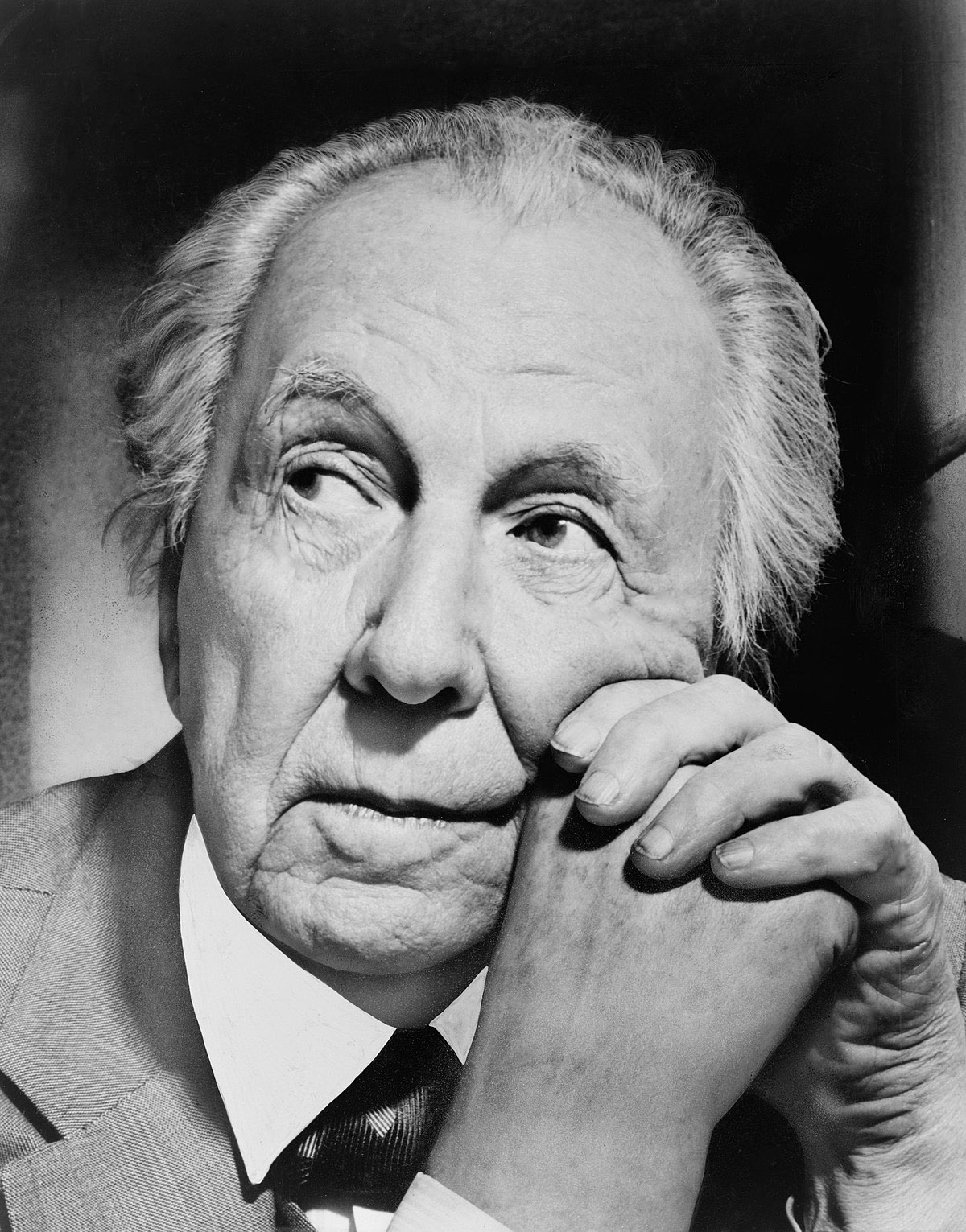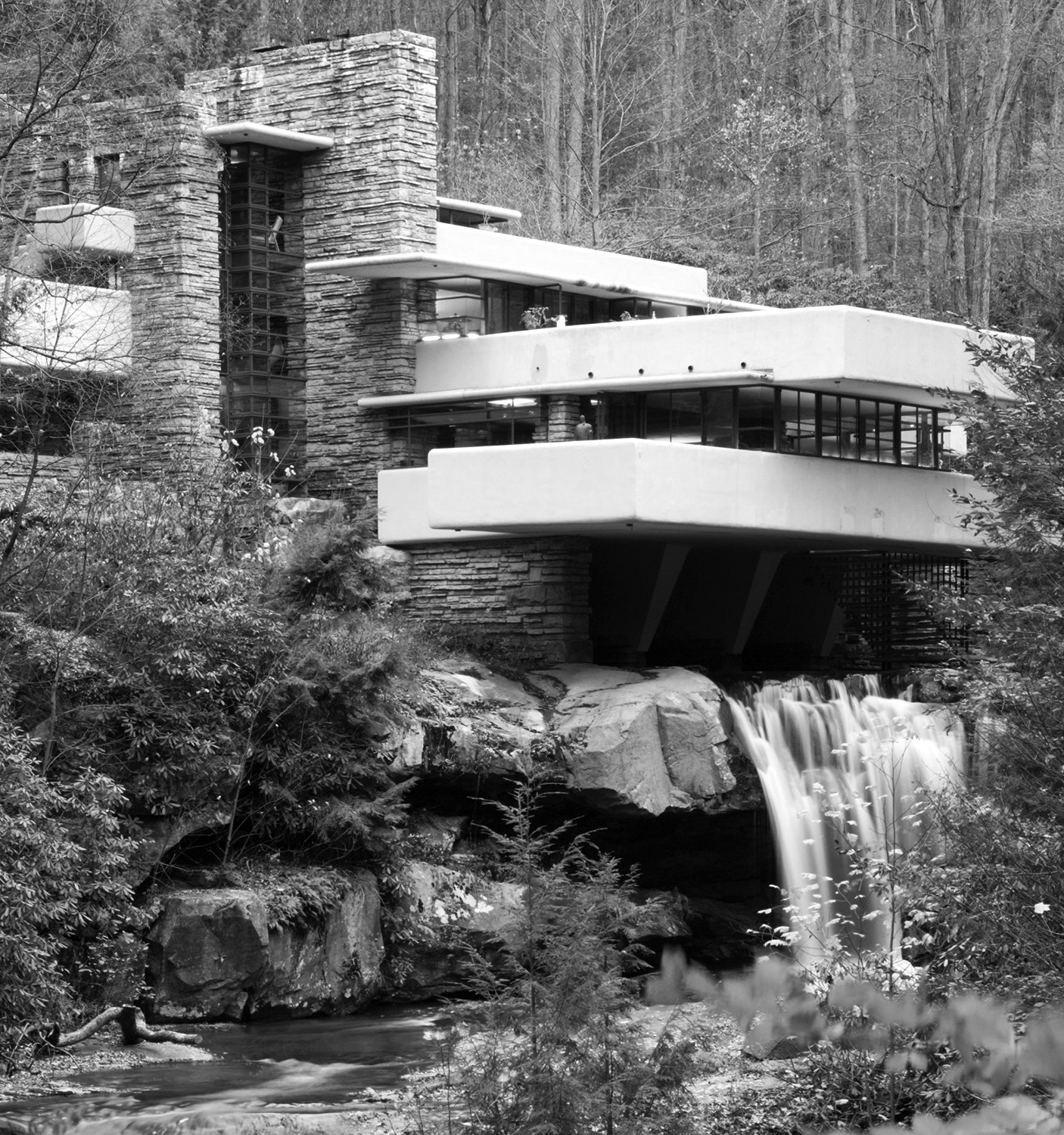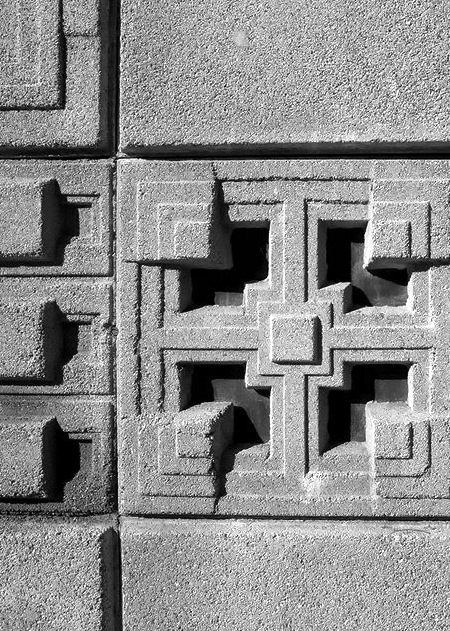Frank Lloyd Wright
It would be difficult to overstate the astonishing talents and achievements of Frank Lloyd Wright, who was the single biggest architectural figure of 20th century America. Wright was also an interior designer, writer and educator, and his 70-year, prolific career included designing more than 1,000 structures, 532 of which were built.
Wright was committed to designing structures that were in harmony with their natural environment, a philosophy he called organic architecture. This philosophy was best exemplified by the riverside residence Fallingwater (1935), which has been called the best all-time work of American architecture.
Wright eschewed historical architectural styles and ornamentation copied from European cultures of antiquity, which he thought had little relevance to a post-Industrial age America. Instead, he sought to develop his own visual vocabulary inspired by timeless systems of geometry, music and –most of all– the beauty and order of the natural world.
Early in his career, Wright was the pioneer of what came to be called the Prairie School movement of architecture that was characterized by long, low structures with deeply-overhanging roofs and horizontal bands of windows. Wright also developed the concept of the modest Usonian home in Broadacre City, his unique vision for urban planning in the United States. In addition to his houses, Wright designed original and innovative offices, churches, schools, skyscrapers, hotels, museums and other structures. He often designed unified, thoughtful interior elements for these buildings as well, including furniture and stained glass. Wright wrote 20 books and many articles and was a popular lecturer in the United States and in Europe. Wright was recognized in 1991 by the American Institute of Architects as "the greatest American architect of all time."
Wright's surviving buildings are American cultural treasures. An active community of preservationists and stewards are committed to maintaining these works of art for the ages, so they can inspire, instruct, and illuminate many generations to come.
"Study nature, love nature, stay close to nature. It will never fail you."
– Frank Lloyd Wright
Some of Wright's most noteworthy architectural projects are also open to the public, including:
Fallingwater in Mill Run, Pennsylvania
Guggenheim Museum in New York City
Hollyhock House in Los Angeles
Marin County Civic Center in San Rafael, California
Pope-Leighey House in Falls Church, Virginia
Frederick C. Robie House in Chicago
SC Johnson Building in Racine, Wisconsin
Taliesin in Spring Green, Wiscon
Taliesin West in Scottsdale, Arizona
Wingspread, in Racine, Wisconsin




